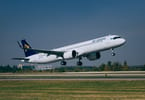The United Nations, which commemorated the birth of the world’s seven billionth baby last October, is predicting the arrival of the one billionth tourist later this year – perhaps in Europe, the United States, South America, or Asia.
According to the latest statistics released by the UN World Tourism Organisation (UNWTO), tourist arrivals have increased from about 674 million in 2000 to 939 million in 2010 and 980 million in 2011.
And with growth expected to continue in 2012 – at a somewhat slower rate – international tourist arrivals are on track to reach the milestone one-billion mark in November or December this year.
Lakshman Ratnapala, emeritus president and chief executive officer of the Pacific Asia Travel Association (PATA), said that global tourism has been on a remarkable upward trend for half a century and more.
“The travel industry has shown to be uniquely resilient with an inherent capacity to overcome challenges – whatever they are, whenever they arise, and wherever they occur,” he said.
Travel is no longer a privilege as it once was, he said, but an inalienable right and a freedom of choice.
“Given this history, I see that global travel and tourism will continue to grow in 2012, albeit at a slower pace than last year,” Ratnapala said. “The prediction is this will be a historic year for global tourism, expected to top the billion arrivals mark, for the first time in history.”
‘Challenging conditions’
UNWTO Secretary-General Taleb Rifai, whose UN agency is based in Madrid, says international tourism hit new records in 2011 “despite challenging conditions”, including a spreading global economic crisis.
For a sector directly responsible for five percent of the world’s gross domestic product (GDP), six per cent of total exports, and employing one out of every 12 people in advanced and emerging economies alike, “these results are encouraging, coming as they do at a time in which we urgently need levers to stimulate growth and job creation”, he added.
The rise in tourist arrivals took place in a year characterised by a stalled global economic recovery, major political changes in the Middle East and North Africa, and natural disasters in Japan, according to the World Tourism Barometer released by UNWTO.
By region, Europe (plus six per cent) was the best performer, while by sub-region South America (plus one per cent) topped the ranking.
Among the top 10 tourist destinations, receipts were up significantly in the United States (plus 12 per cent), Spain (plus nine per cent), Hong Kong (China) (plus 25 per cent) and the UK (plus seven per cent).
Big spenders
The top spenders were led by emerging source markets: China (plus 38 per cent), Russia (plus 21 per cent), Brazil (plus 32 per cent) and India (plus 32 per cent) followed by traditional markets, with the growth in expenditure of travelers from Germany (plus four per cent) and the United States (plus five per cent) above the levels of previous years, according to UNWTO.
Despite persistent economic uncertainty, tourist arrivals to Europe reached 503 million in 2011, surpassing the half billion mark and accounting for 28 million of the 41 million additional international arrivals recorded worldwide, according to UNWTO.
“How the global tourism scene will play out depends on a number of variables such as state of the global economy, political upheavals, regional conflicts, oil and food prices, natural disasters, changing demographic trends and competitive marketing – to name only a few,” Ratnapala said.
He said travel often is about choices. Travelers, if faced with challenges of politics in specific places, will seek alternative, more stable places to visit and if faced with economic challenges on long-haul travel, they will opt for less expensive, shorter duration vacations, nearer home.
This is evident in the statistics for 2011, which show that although the Middle East lost some five million tourists due to political upheavals, Europe gained partly as a result of the shift away from the troubled Middle East.
The regional and country-specific pictures will vary depending on the circumstances, he noted.
Growth patterns
For instance, last year growth in Asia was weaker, because many East and Southeast Asian countries that are heavily dependent on the Japanese outbound traffic saw a decline in Japanese arrivals precipitated by the natural disasters there.
This year, those countries dependent on the European source markets are likely to feel the pinch of the economic woes of Europe.
“But these shortfalls can be offset by gains in outbound travel from the new markets of China and India,” Ratnapala added.
He predicted that emerging economies, primarily of Asia, and generally all the BRIC (Brazil, Russia, India and China) countries will lead the growth in global tourism, to be followed by the Americas, now in an economic recovery mode and trailed by the traditional source markets of Europe.
The Middle East is likely to see declines until the uncertainties of the Gulf return to stability.
“My advice to travel marketers is to invest more marketing dollars on the BRICs, because the future is there,” he said.
In the end, he said, the true success of travel marketing is not in the numbers of tourists arriving at a destination, but in the earnings that tourism generates for the national exchequer and the tourism businesses.
Meanwhile, UNWTO is urging governments to consider advancing travel facilitation, an area in which in spite of the great strides made so far there is still much room for progress.
UNWTO is advising countries to make the most of information and communication technologies in improving visa application and processing formalities, as well as the timings of visa issuance, and to analyse the possible impact of travel facilitation in increasing their tourism economies.
WHAT TO TAKE AWAY FROM THIS ARTICLE:
- For a sector directly responsible for five percent of the world’s gross domestic product (GDP), six per cent of total exports, and employing one out of every 12 people in advanced and emerging economies alike, “these results are encouraging, coming as they do at a time in which we urgently need levers to stimulate growth and job creation”, he added.
- The rise in tourist arrivals took place in a year characterised by a stalled global economic recovery, major political changes in the Middle East and North Africa, and natural disasters in Japan, according to the World Tourism Barometer released by UNWTO.
- China (plus 38 per cent), Russia (plus 21 per cent), Brazil (plus 32 per cent) and India (plus 32 per cent) followed by traditional markets, with the growth in expenditure of travelers from Germany (plus four per cent) and the United States (plus five per cent) above the levels of previous years, according to UNWTO.






















